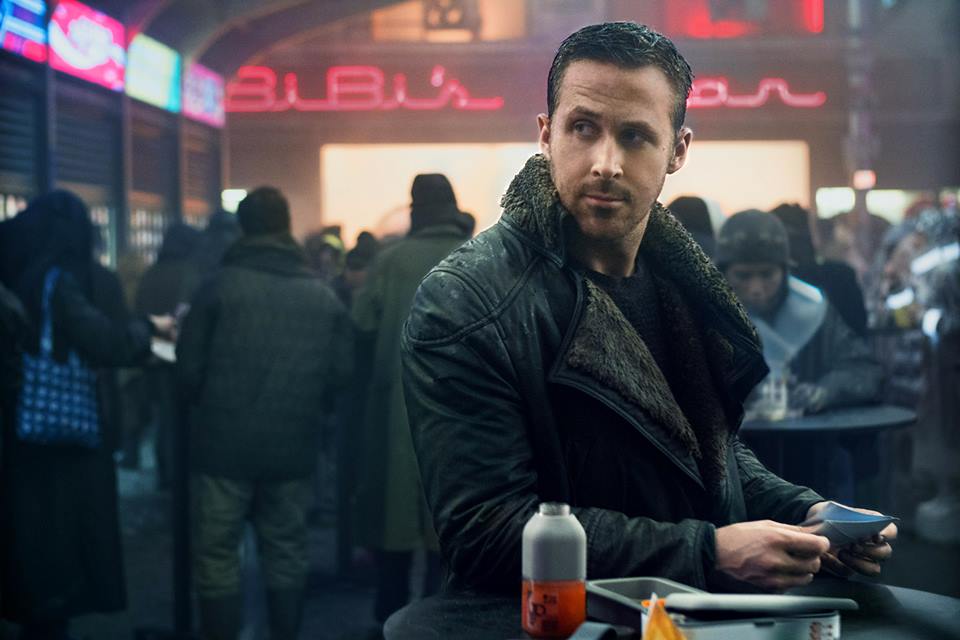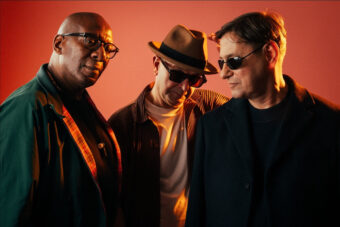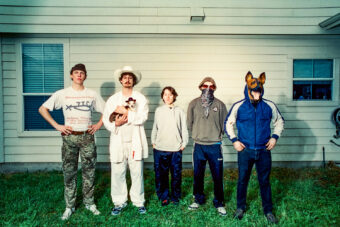“Cells, cells interlinked.” Thus begins the rapidfire “baseline response test” undergone by every blade runner after returning from days spent “retiring” artificial replicants. An inversion of a quote from Nabokov’s Pale Fire, the statement itself feels like a pretty succinct approximation of the 35-year-old Blade Runner franchise’s spirit, with questions of the man within the machine still more persistent than ever. It’s 2049 in the long-awaited sequel, but the landscape hasn’t changed much since 2019, when retired LAPD officer Rick Deckard (played by Harrison Ford) first stepped out into the gritty streets of Los Angeles in search of rogue replicants loose throughout the city.
Even as the rule of the land has shifted to favor the newly-formed Wallace Corporation instead of the first film’s Tyrell Corporation, Blade Runner 2049 brings us back to the same enrapturing universe. Neck-deep in a visual signifiers of a culture anxious about its own fleeting elitism, Los Angeles continues to look straight out of mid-80s Tokyo as Officer KD6.3-7 (Ryan Gosling), or K for short, slowly unravels the mysteries behind a new form of reproductive artificial intelligence. After stumbling onto the buried bones of a replicant who, according to an LAPD autopsy, mysteriously died in childbirth, K travels through deserts and floods in search of the child who survived the delivery. He traces a series of implanted memories that eventually lead him to Deckard’s hideout in a Las Vegas casino, where glitchy Elvis holograms soundtrack noir shoot offs and Sinatra’s “One For My Baby” melts hearts like it’s 1949 again.
Where the first film’s replicants only lived four years, and were unable to reproduce, 2049 introduces constraints that further complicate their relationship with humanity. In the original Philip K. Dick novel, Deckard is a human, bound by the standard lifespan. Yet Ridley Scott’s 1982 adaptation introduced the possibility that Deckard might not be so human after all, teasing out his most robotic qualities in a series of audience-tested edits that change the ultimate conclusion of the film. In 2049, it’s revealed upfront that K is a replicant, albeit one with an increasingly human lifespan. But soon enough, even this absence of humanity is called into question as K—later dubbed “Joe” by his hologram girlfriend—suspects that he might actually be the offspring of the buried replicant himself, making him the first in a new evolution of artificial intelligence now with the agency to keep going.
All of this is heightened by the fact that the movie cost well over $150 million to make, which is very evident through the production. From the rippling amber of Wallace’s (Jared Leto) marble fortress to the lavender glow of the city’s 50-foot adverts, the lighting and cinematography help flesh out the world of the original into something gushing with limitless feeling. Tapping into an increasingly banal 80s nostalgia, composer Hans Zimmer handles elements of the original Vangelis score surprisingly well, pairing the brassy bombast expected of a Zimmer production with original synth programming that nicely accents the broader rhythm of the film.
Through the Hollywood box office treatment makes it certainly stronger by technical means, Denis Villeneuve seems eager to ask the same cyclical questions as the original, easing viewers into the same spiral of man-vs-machine tautology, now further tangled beyond distinction. As much as its bigger budget helps stretch the Blade Runner universe into a newfound sensory overload, 2049 feels oddly claustrophobic, burdened by loose ends it would rather gloss over with the Hollywood treatment than further explain in screenwriting. Thirty years on in film time, the goal to pass as human is still the highest aim of every replicant. Where the first film’s Voight-Kampff test is here exchanged for a bit of Nabokov, the core of each character is still defined by its proximity to some human essence, which feels like a failed opportunity to explore something beyond this digital dualism.
Ultimately, Villeneuve’s sequel is most interesting in the calm moments wholly uninterested in personhood. Sitting in his apartment, Gosling’s character leans into the swaggering charm of Blue Valentine as he and his girlfriend Joi take comfort in the hazy boundaries between bodies, too wrapped in physical embrace thanks to the Emanator—a tool that allows her to escape her flattened hologram to briefly inhabit a more bodily form—to really give it a second thought. Inches away from a final kiss, the hologram stalls, as Joe is pulled into a phone call and sent out in search of answers once again. Whatever lies at stake in the end, it’s this rift in fluid motion that really hits the hardest.





